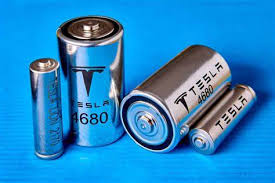In the ever-evolving landscape of electric vehicles, Tesla’s innovative strides often set the pace for industry advancements. Recently, the buzz surrounding Tesla’s 4680 battery cells has captured the attention of automakers, investors, and environmentally-conscious consumers alike. These cells promise to reshape the future of electric vehicles by enhancing efficiency, reducing costs, and boosting performance. As we delve into the transformative potential of the 4680 battery cells, you’ll discover why they are considered a game-changer in the EV industry and how they might influence your next vehicle purchase.
The Breakthrough of Tesla’s 4680 Battery Technology
What Makes 4680 Battery Cells Unique?
Tesla’s 4680 battery cells stand out primarily due to their larger size and improved design compared to traditional cells. Named for their dimensions—46 millimeters in diameter and 80 millimeters in height—these cells offer several distinct advantages:
- Increased Energy Density: The 4680 cells provide five times the energy capacity of the previous 2170 cells, resulting in increased range and performance.
- Cost Efficiency: By adopting a tabless design, Tesla has reduced production complexity and costs, aiming for a 56% reduction in cost per kilowatt-hour.
- Faster Charging Times: The improved thermal management and design allow for quicker charging, minimizing downtime for drivers.
The Impact on Vehicle Range and Performance
The enhanced energy density of the 4680 cells translates directly into longer vehicle ranges. For instance, Tesla’s Model Y, equipped with these new cells, is expected to achieve a range exceeding 400 miles on a single charge—an increase of more than 20% over earlier models. This improvement not only alleviates range anxiety but also positions Tesla vehicles as leaders in the long-distance EV market.
Performance enthusiasts will appreciate the 4680 cells’ impact on acceleration and power delivery. The new battery architecture supports higher discharge rates, enabling Tesla vehicles to maintain peak performance for extended periods, making them even more competitive against traditional internal combustion engines.
Environmental and Manufacturing Benefits
Tesla’s commitment to sustainability is further enhanced by the 4680 cells. The production process incorporates renewable energy sources, reducing the carbon footprint associated with battery manufacturing. Additionally, the streamlined production of these cells requires fewer materials and resources, aligning with Tesla’s goal of a fully sustainable energy ecosystem.
Practical Considerations for Consumers
Charging Infrastructure and Accessibility
With the introduction of the 4680 cells, understanding charging options becomes crucial for consumers. Tesla’s Supercharger network, already extensive, is continuously expanding to accommodate faster charging rates. Here are some tips for optimizing your charging experience:
- Use Tesla’s Navigation System: It helps locate nearby Superchargers and provides real-time availability.
- Home Charging: Consider installing a Tesla Wall Connector for convenient overnight charging.
- Public Charging Stations: Familiarize yourself with compatible third-party networks, such as ChargePoint and EVgo, which offer additional flexibility for long trips.
Where to Buy and What to Compare
As the 4680 technology rolls out, prospective buyers should stay informed about which Tesla models currently feature these cells. Currently, the Model Y and the upcoming Cybertruck are slated to incorporate 4680 technology. When comparing EVs, consider the following factors:
- Battery Range: Evaluate models with the longest range for your driving needs.
- Charging Speed: Look for vehicles that support fast charging to minimize wait times.
- Cost vs. Efficiency: Balance initial purchase cost with long-term savings on fuel and maintenance.
Future Implications and Industry Trends
The introduction of Tesla’s 4680 battery cells is catalyzing change across the automotive industry. Competitors like Rivian and Lucid Motors are pushing the envelope with their battery technologies, and traditional automakers such as Volkswagen and Ford are accelerating their EV development timelines. As battery technologies evolve, here are some trends to watch:
- Solid-State Batteries: These promise even greater energy density and safety than current lithium-ion solutions.
- Increased EV Adoption: As battery costs decline, electric vehicles will become more accessible to a broader audience.
- Sustainability Initiatives: Automakers are increasingly focusing on eco-friendly production and recycling processes.
Conclusion
Tesla’s 4680 battery cells are poised to revolutionize the electric vehicle landscape by offering superior range, performance, and sustainability. As these innovations become mainstream, they will undoubtedly influence consumer choices, industry standards, and environmental policies. Whether you’re considering an EV purchase or simply interested in automotive trends, understanding the impact of 4680 technology is essential.
Are you ready to embrace the future of electric mobility? Share your thoughts on how Tesla’s advancements might influence your next vehicle choice. As we drive towards a cleaner, more sustainable future, the possibilities are as exciting as they are promising. Keep an eye on the latest developments, and you might just find that your dream car is electric, efficient, and empowered by cutting-edge battery technology.

